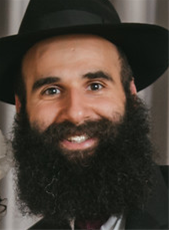A yeshiva is a place where Jews gather to study Torah and rabbinic traditions. Originally referring to an academy for advanced scholars, today the term also refers to Jewish elementary schools where Judaic studies comprise a significant portion of the curriculum.
History of the Yeshiva
According to tradition, the institution of the yeshiva predates even the giving of the Torah. Shem and Eber (Noah’s son and great-grandson) led a yeshiva, in which Abraham,1 Isaac,2 and Jacob3 all studied. Accordingly, before Jacob and his clan relocated to Egypt, he sent Judah to establish a yeshiva there as well.4
After the Torah was given, the yeshiva was where the Torah and the oral traditions were passed on from generation to generation. During the Second Temple era, there were large yeshivot led by the great sages of the day. The teachings of these academies were recorded in the Mishnah, Midrash, Gemara and other texts from that period.
This continued even after the Jewish people were exiled. As the Jewish community in the Holy Land truncated, the yeshivot of Bavel (modern day Iran and Iraq) rose in prominence as centers of Jewish scholarship.
During the period of the Rishonim (approximately 1000-1500 CE) they were replaced by yeshivot in Spain (Sepharad) and France-Germany (Ashkenaz).
In many communities, the rabbi of the city also led a yeshiva. These were often ad hoc affairs, in which students studied in a small annex to the rabbi’s home or the local synagogue.
The Yeshiva Movement
Throughout the 19th century, a new wave of yeshivot opened in Central and Eastern Europe. With official staff, curricula, and study halls, they infused Torah study with purpose, dedication, and pride. Notable examples include the Volozhin Yeshiva—a template which was duplicated all over Lithuania, and the Pressburg Yeshiva—in what is now Bratislava—which left an indelible mark upon Austro-Hungarian Jewry.
In 1896, Rabbi Shalom Dov Ber Schneersohn, the fifth Chabad Rebbe, opened a unique yeshiva in the Russian city of Lubavitch, where, in addition to the long hours dedicated to Talmud and Jewish law, a significant part of the day—morning and evening—was devoted to the study of Chassidic teachings. This yeshiva has spawned the many Chabad yeshivot one now sees all over the world (including the underground network of Chabad yeshivot that operated in the Soviet Union) .
Read: A Day in the Life of a Chabad Yeshiva Student
Important Yeshiva Terms
Mesivta: The Aramaic word for yeshiva is metivta (or mesivta in Ashkenazi pronunciation). In many circles, mesivta may be used as a proper noun as part of the name of a given yeshiva, but it is not used as a generic term referring to a place of Torah study. In Chabad parlance, mesivta refers to a yeshiva ketanah (“small yeshiva”) for high school students.
Beit Midrash: (beis medrash in Ashkenazi pronunciation) means “house of study.” Unlike the synagogue, where the primary activity is praying, the beit midrash is used mostly for Torah study, although praying happens there as well. In addition to referring to the actual study space, it often refers to a yeshiva for older, post high school students, also known as a “yeshiva gedolah.”
Kollel: Literally “collective,” a kollel is a yeshiva program for married men, who often receive a small stipend to facilitate their devotion to Torah study.
Read: Five Reasons to Spend a Semester in a Yeshiva
Who Is Who in the Yeshiva?
Rosh Yeshiva: The “head of the academy,” the rosh yeshiva may teach all students or only the more accomplished scholars.
Mashgiach: The “supervisor” is responsible for the performance and wellbeing of yeshiva students. In some yeshivot, the mashgiach may address the students regularly.
Mashpia: In the Chabad yeshiva system, many of the responsibilities associated with the mashgiach are in the domain of the mashpia (“giver”), who teaches the students Chassidic texts and provides guidance in matters of spiritual advancement and personal development.
Menahel: The director may be responsible for student admissions, logistics, policy decisions, and generally ensuring that everything is running well.
Talmid: Hebrew for “student,” the talmid is the backbone of the yeshiva and the raison d’être for its existence.
This can be further broken down into two categories:
Avreich: Hebrew for “peer,” it refers to a kollel fellow.
Bochur: Alternatively translated as “youth” or “chosen one,” it refers specifically to an unmarried student.








Join the Discussion